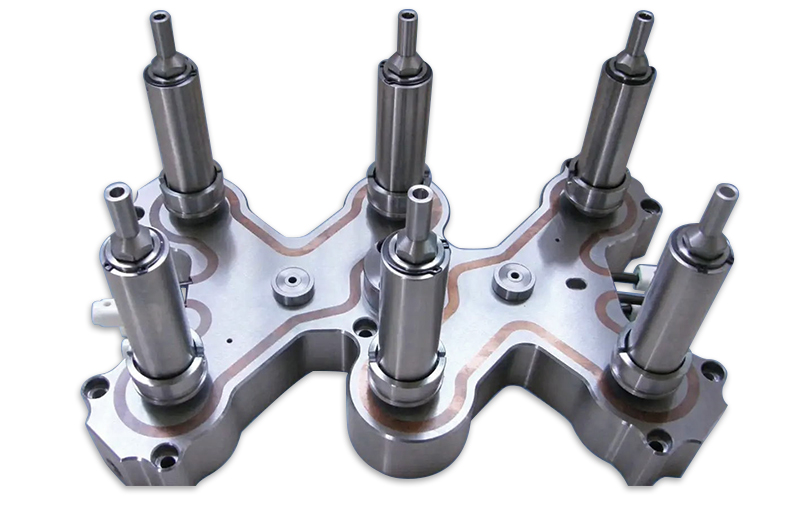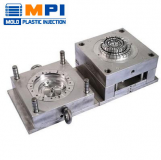Hot runner systems in injection molding are truly game-changing. They heat plastic right inside the mold, ensuring it flows smoothly. This system contrasts with cold runners where plastic cools and solidifies in the runner, the channel guiding plastic into the mold cavity. Hot runners keep the plastic in a molten state, allowing for more efficient and faster production.
A hot runner system consists of heated components, like nozzles and manifolds. These parts maintain the plastic’s temperature as it travels from the injection molding machine to the mold cavities. This process means less plastic waste, as you don’t have to discard solidified runners. It’s a huge plus for large-scale production, where efficiency and minimizing waste are critical.
But it’s not just about saving plastic. Hot runners also improve part quality. They provide more consistent heat, reducing defects in the final product. Plus, they speed up cycle times. You can produce more parts faster, which is a big advantage in fast-paced manufacturing environments.
What is the purpose of hot runner?
Understanding the purpose of a hot runner system in injection molding can really open your eyes to the marvels of modern manufacturing. Let’s see this fascinating topic!
Enhancing Flow and Consistency of Molten Plastic: The primary role of a hot runner is to keep the plastic in a molten state. This ensures that the plastic flows smoothly into the mold cavities. You’ll find that it results in a more consistent and quality finish in the produced parts.
Increasing Production Efficiency: Hot runner systems speed up the molding process. They eliminate the time needed for the plastic in the runners to cool down and solidify. This means your production cycle times get a significant boost, which is fantastic for high-volume manufacturing.
Reducing Plastic Waste: In traditional cold runner systems, plastic in the runners solidifies and often goes to waste. Hot runners keep the plastic molten, so there’s no solidified runner waste. This is not only cost-effective but also environmentally friendly.
Lowering Operational Costs: Over time, the savings from reduced plastic waste add up. Plus, faster cycle times mean more parts produced in less time, reducing labor and energy costs.
Improving Part Quality: Hot runners offer better control over the injection process. This means fewer defects like warping or sink marks. High-quality parts are essential, especially in industries like automotive or medical devices.
Facilitating Complex Part Design: Some part designs are really intricate. Hot runners can handle these complex designs better than cold runners. They provide more control and precision, which is crucial for complex or small parts.
Enhancing Material Options: Hot runners are versatile. They work well with a wide range of plastic materials. This includes materials that are sensitive to temperature or have a narrow processing window.
Reducing Energy Consumption: Though hot runners need energy to maintain temperature, they often use less energy overall. This is because the molding cycles are faster and more efficient.
Simplifying Automation: In today’s world, automation is key. Hot runners integrate easily with automated systems. This streamlines the manufacturing process and reduces the need for manual intervention.
Supporting Multi-Cavity Molding: For molds with multiple cavities, hot runners are especially beneficial. They ensure uniform distribution of plastic to all cavities, which is critical for consistency across all parts.
Offering Better Aesthetic Control: For products where appearance is crucial, hot runners are a blessing. They help in achieving better surface finishes and reduce the chances of blemishes on the final product.
Enabling Sequential Molding: This is a more advanced application. Hot runners can control the flow of plastic to different parts of the mold at different times. This is great for producing parts with varying wall thicknesses or special features.
The hot runner system in injection molding is a key player in modern manufacturing. It enhances efficiency, reduces waste, and improves the quality of molded parts. It’s a brilliant example of how technology can make processes smarter, faster, and more eco-friendly.

How to install a hot runner in infection molding?
Installing a hot runner in an injection molding machine is a process that requires precision, but it’s definitely manageable with the right approach. Let’s walk through the steps to get a clear understanding of how to do this effectively.
Step 1: Preparing the Injection Molding Machine
First, ensure your injection molding machine is ready for installation. Clean the machine thoroughly, focusing on the area where you’ll mount the hot runner. A clean machine means fewer complications during and after installation.
Step 2: Assembling the Hot Runner System
Usually, the hot runner system comes in separate parts. Carefully assemble these parts as per the manufacturer’s instructions. It’s crucial to follow these guidelines closely to avoid any mishaps.
Step 3: Mounting the Hot Runner to the Mold
Next, mount the assembled hot runner system onto the mold. Make sure you align it correctly to ensure optimal functioning. A misaligned system can lead to poor-quality products or even damaged the mold.
Step 4: Connecting Electrical Components
Hot runners need electric power to maintain the temperature of the plastic. Connect all electrical components like heaters and thermocouples as per the wiring diagram provided. It’s important to double-check all connections for safety.
Step 5: Installing Temperature Control Systems
A temperature control system is crucial for a hot runner. Install and configure this system to manage the temperature of the molten plastic accurately. Proper temperature control is key to producing high-quality parts.
Step 6: Testing for Leaks
Once everything is in place, do a leak test. This involves running the system and checking for any plastic leaks. Leaks can be a sign of improper installation or a faulty system, so don’t skip this step.
Step 7: Calibrating the System
After confirming there are no leaks, calibrate the system. This involves setting the temperatures and pressures as per the requirements of the plastic material you’re using. Each material has its processing parameters, so refer to material guidelines.
Step 8: Running a Test Cycle
Now, run a test cycle with the hot runner system. This helps you see if everything is working as it should. Keep an eye out for any issues in the quality of the produced parts.
Step 9: Fine-Tuning
Based on the results of your test run, make any necessary adjustments. Fine-tuning the system ensures you get the best possible results when you start full-scale production.
Step 10: Regular Maintenance
Once installed, regular maintenance of the hot runner system is essential. This includes cleaning and checking for wear and tear. Proper maintenance keeps the system running smoothly and prolongs its life.
Installing a hot runner system in an injection molding machine is a detailed process that needs attention and care. By following these steps, you can ensure a successful installation that leads to efficient and high-quality plastic part production.

